My maps of Guangdong and Guangxi occupations
There is a basic frustration with that missing county... Qingyuan Shi. Don't know
how to find the missing data...
Proportion of the population in Agriculture
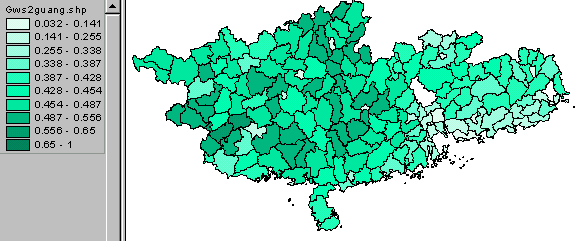
What's interesting here is where the agricultural population isn't --principally along the easternmost coast, where the % drops below 25.
Indeed, Guangdong seems to be markedly less 'agricultural' than Guangxi, and it probably has to do with what people are doing instead of cultivating fields... the story of which is partially told in the next map:
Proportion of the population in Industry
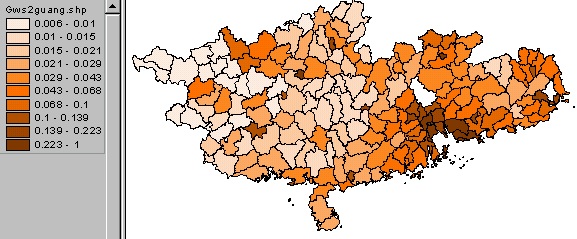
This doesn't tell us much about just what the Industry is, but there's a real concentration around Canton and where Hong Kong would be if it was included in this map. The Special Economic Zones are there, and up the coast to the northeast too, on towards Fujian province. So we have a LOT of concentrated industrial development, including some pockets in what will probably turn out to be cities in other parts of the two provinces.
Proportion of the population in Mining
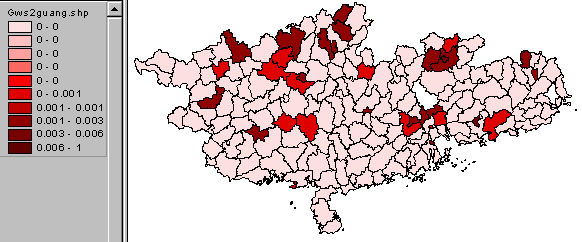
Not too surprising that mining is concentrated in a few places, nor that the proportions of the population are pretty small. What are they mining? Under what conditions? For what industries? Again, not questions we knew we were after the answers to.
Propoprtion in Commerce
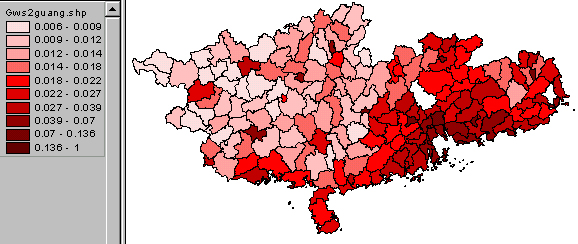
Now just what is commerce? We see some obvious towns/cities here and there in the hinterlands, but the main thrust of the map is from HongKong and Canton inland. Still relatively small proportions of the population --like less than 5% in all but a few areas. ARE the peaks in values of % in 'Industry' and 'Commerce' in the same places?
Proportion of Immigrants
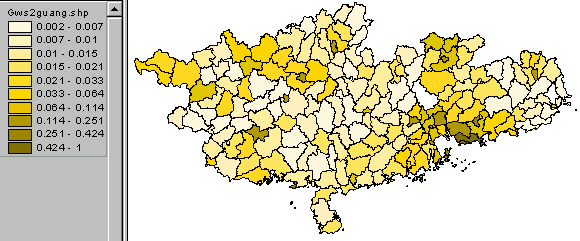
The question here is: what attracts immigrants to counties?
And the answer is: opportunity, and especially (probably and usually)
industrial opportunity. The really big draw is the Special Economic Zones, and
it would certainly be interesting to inquire into where people come from
(which the Census won't answer for us) and what kinds of settings thy're leaving to
migrate --whether small towns, or rural counties, etc.
We know something about who they are --notably females 15-24,
working in what amount to sweatshop conditions, for the most part. The SEZ of Shenzhen has more than 40% of its
population non-natives of the county. Zhuhai and Huizhou have more than 25%




